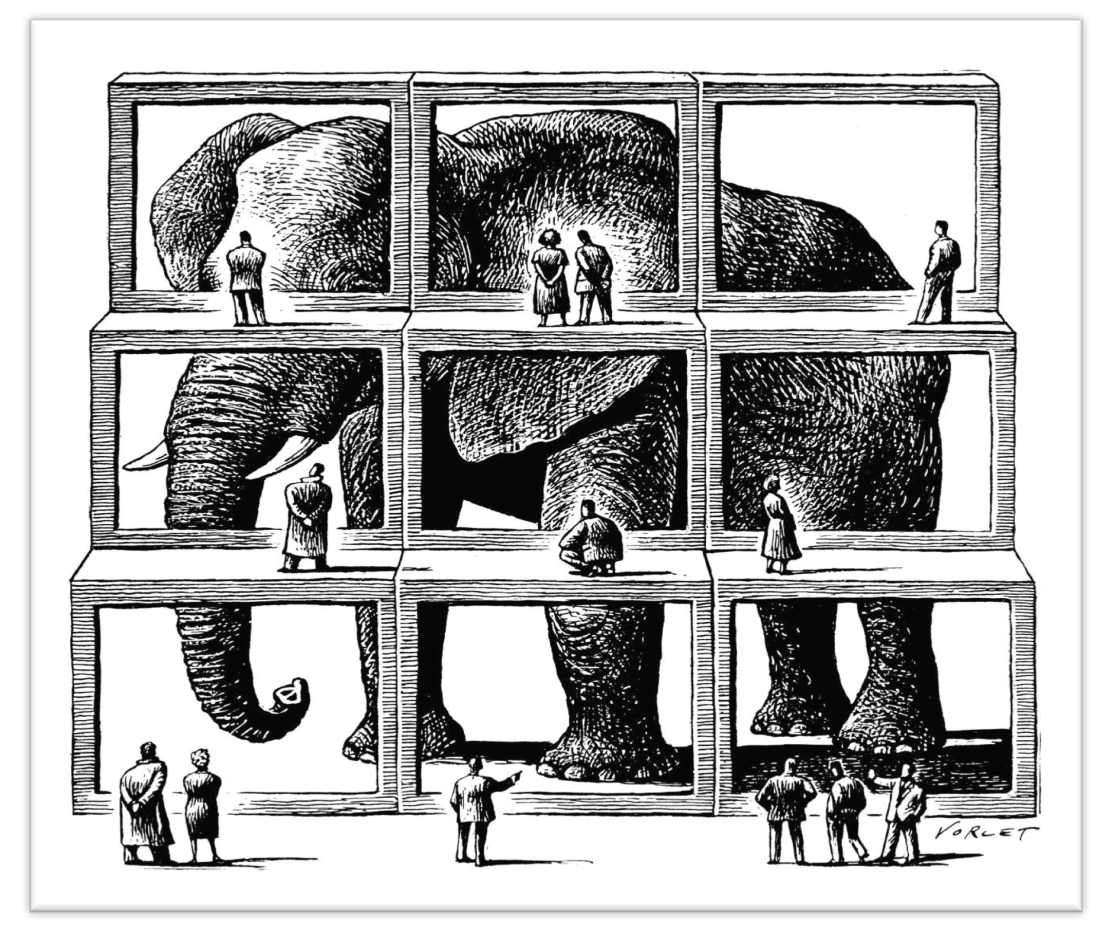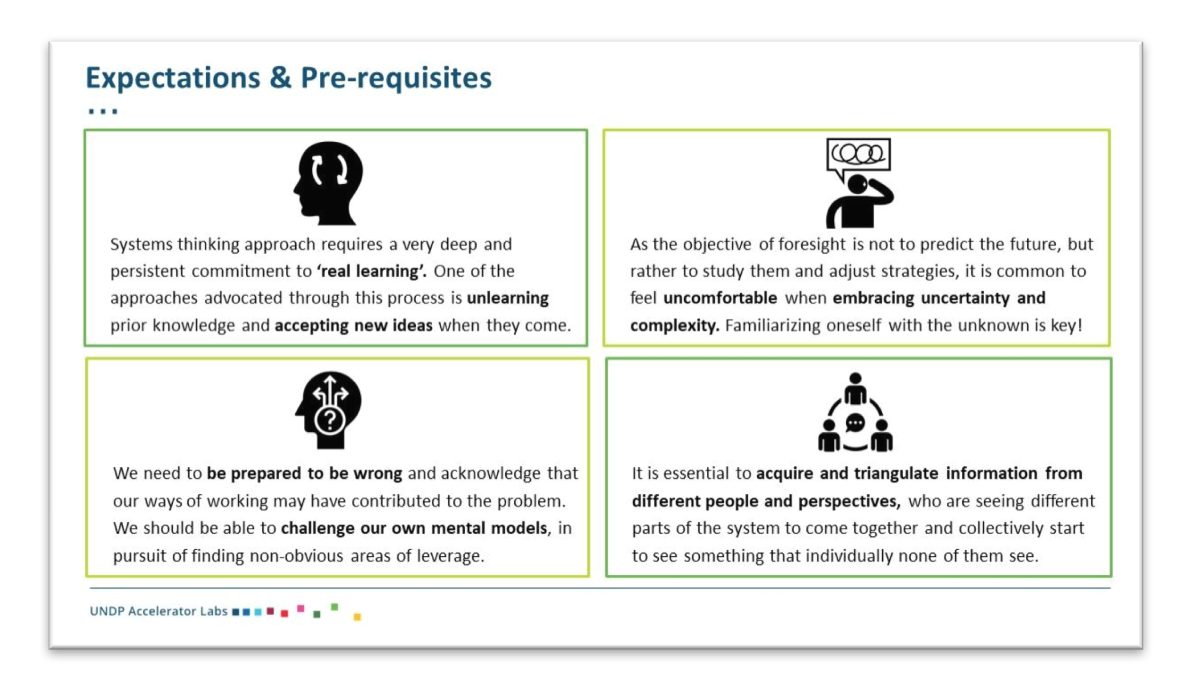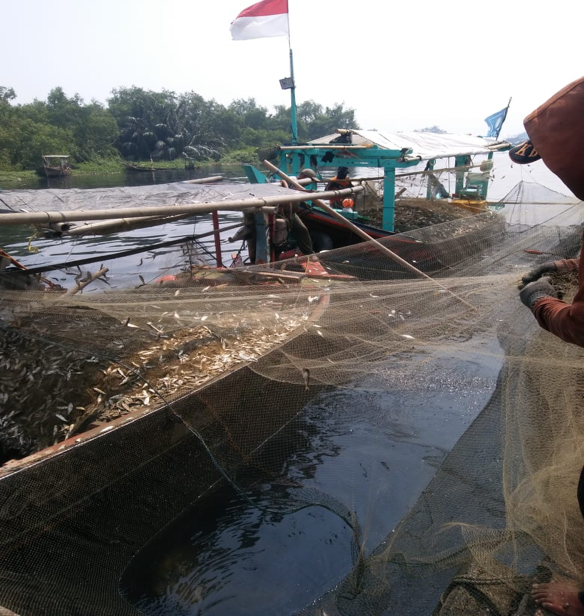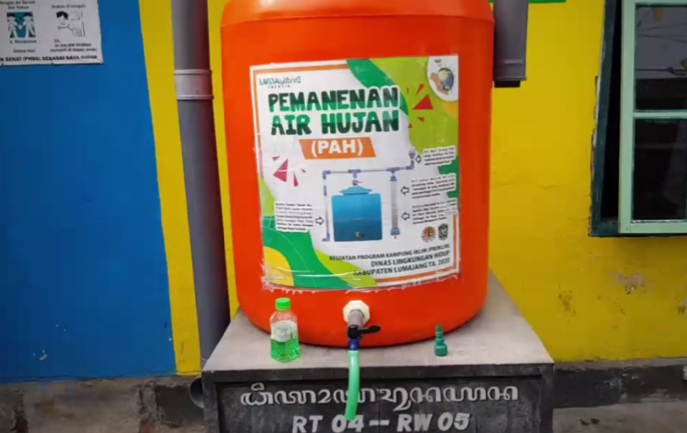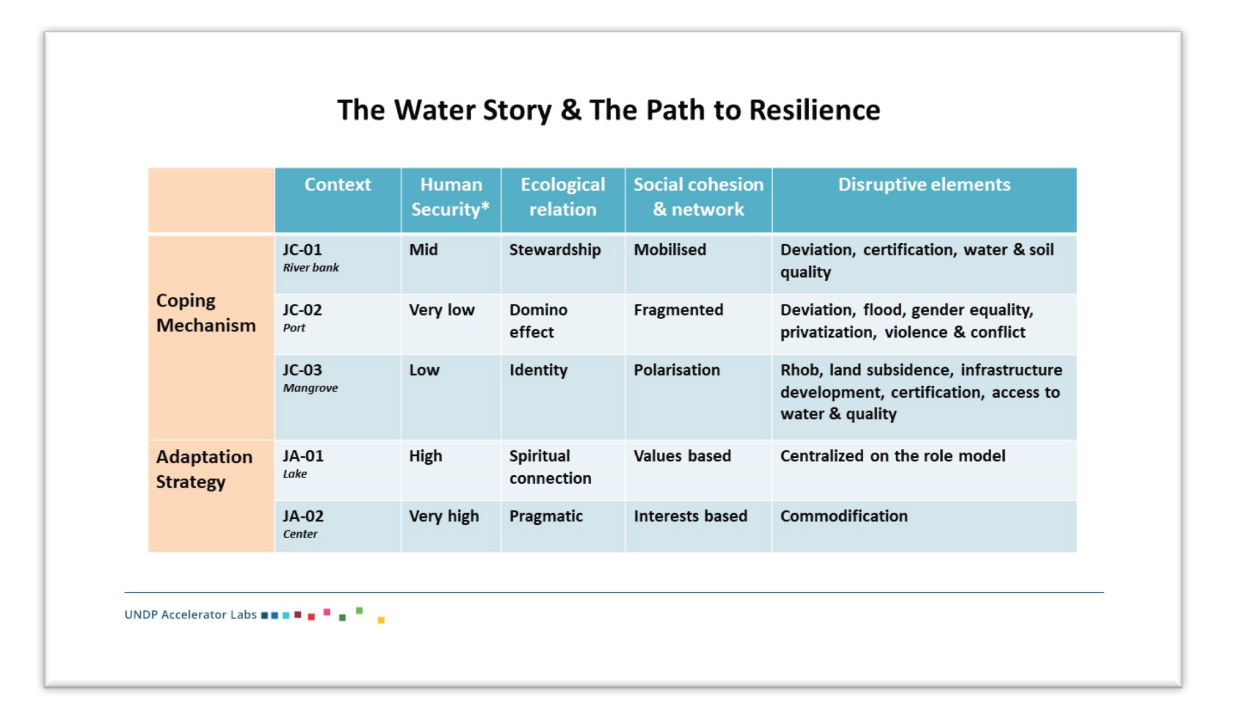Writing by Yulia Sugandi, Head of Solutions Mapping, UNDP Accelerator Lab, Indonesia
Have a look at this elephant picture and imagine you’re one of the people in it. What would you see?
From a vantage point, it’s easy to see the whole elephant as it is. But if you’re standing in front any of the smaller boxes, you will miss out on the entire picture.
This can also be applied to analyze problems, where observers must understand that the bits and pieces they are looking at may not entirely represent the fact. To get the complete picture, each person must share their perspectives and work collectively on the issue they are facing.
This method is beneficial when addressing the most urgent and recurrent development challenges in Indonesia, such as flooding. In recent decades, Indonesia has grown accustomed to a string of devastating flooding, with the most recent one in South Kalimantan last month, displacing more than 250,000 people.
If we want to understand more about flooding, we must build a better, more collective picture of the “elephant in the room”.
Sensing the Systems: What’s There and Not There
As part of our first 100-day learning cycle, we set out with three quick explorations to build a picture of the elephant, using three sets of cubes. The first cube is an internal UNDP group, the second cube involves various stakeholders, including academics and officials, while the third cube includes low-income urban communities.
The application of systems thinking in the first exploration defined water as an urgent issue in an urban context. The second exploration showed the interplay between flooding and the social system. The third exploration described the impact of the low-urban community exclusion amid discussion on water related disasters.
To discover “the elephant in the room” we used a Collective Intelligence method. Collective Intelligence (CI) is one of the key methods that the Accelerator Labs is bringing to learn faster and collectively about the most pressing development challenges, potential solutions, and unseen opportunities.
This platform enables of people to work together and mobilize a wider range of information, ideas. The result of this collective effort is knowledge that cannot exist on the individual level.
You may not realise it, but we have been using CI for thousands of years to sustain our existence and grow, nonetheless at the Accelerator Labs we use it conscientiously to become smarter together.
The three explorations demonstrate the application of CI method in understanding water issues in cities. Let's start our exploration by going to the first cube!
Exploration 1: Rediscovery at Home
We kicked off our exploration with CI sessions with UNDP Indonesia’s country office and Pulse Lab Jakarta. Our aim is to find the root causes and impact of urban poverty and urbanization.
Our frontier challenge began with the task of grasping urban poverty and urbanization, and their root causes and impact. We were conditioned in a safe and comfortable environment which is required to generate their diverse inputs and collective action through participatory learning and reflection.
We discovered the interdependence between urban and rural areas, and the inseparable ties of social and ecology.
Water-related disasters dominate much the urban ecosystem, which is also related to global ecosystem. We continued to follow the water trail to dive into the system further.
“Let the systems in!”
The systems thinking framework was distributed to our Collective Intelligence session participants
Exploration 2: The More the Merrier
In our second exploration, we gathered insights on water related disasters among low-income urban communities from various stakeholders, including academics and officials.
We wanted to learn about the environmental carrying capacity in an urban sprawl like Jakarta. It is crucial for us to get the clear picture on the relationship between flooding and the social system.
Looking at Jakarta, it appeared that the interventions for urban planning policies produced high risk development choices that led to flooding.
Here, we learned that flooding was an indicator of imbalanced governance and leadership systems. The exclusion of low-income urban communities from the system raised questions on how disasters like flooding impact them.
“Despite seasonal rob tidal flood, land subsidence, no access to clean water and the threat to get evicted, this is my home. I sincerely hope my living area can truly become a recognized urban village.” (Participant, JC-03)
“We cannot deliver public services such as clean water and electricity to areas
that are not recorded in the system.” (Government participant)
Exploration 3: Skin Deep
Next, we dived deep with the immersion method.
We interacted with the affected communities through a series of In-depth conversations and an exchange of photos and videos to fully understand their point of views.
“This is one of our innovative models for rain harvesting that has been replicated in other areas. Innovation doesn't grow in isolation. They were born from a change in mindset and the cohesiveness of residents in overcoming challenges based on their local resources.” (Participant, JA-02)
The immersion captured more complexities. In communities that cannot cope with water-related disasters, we found additional stress due to lack of recognition and solidarity. Bottlenecks prevented them from developing grassroots solutions.
By applying a systems perspective on the problem, we learnt in the end that neglecting low-income urban communities in the system unfortunately also means overlooking opportunities & potential solutions for tackling water related disasters.
Stories from the ground showed that low-income urban communities shaped the system through their ecological relations with water. Some communities viewed themselves as the water stewards or the river keepers to prevent future disasters. Other than that, we found disruptive elements in every community context need attention because they can destabilize the system and trigger other shocks.
Disregarding these realities on the ground prevents us from getting a full sense of the system and from creating a more resilient system!
Our remote ethnography result: floods are more than just about floods
Sensing the invisible
After conducting the three explorations, I discovered that a major barrier in mitigating water-related disasters is the gap between policymakers and low-income urban communities. It became clear to me that we are indeed the system itself. Because no matter how big the leverage point is in any issue around us, people do change systems.
At the end of the day, we may never see the full extent of an issue because nobody really knows the ever-changing system. What we can do is sense the boundaries within a system. All the stages of the exploration were crucial in naming the problem, contextualizing, and proposing solutions.
Have you ever sensed the boundaries within the systems around you? Or maybe taken action for systemic change that is worth telling? Feel free to reach out as we continue experimenting and witnessing these systems!
-
Get in touch with UNDP Accelerator Lab Indonesia: acceleratorlab.id@undp.org
Sincere thanks to Bas Leurs, Suryo Utomo Tomi and Ranjit Jose for your comments on the initial version of the blog.

 Locations
Locations

